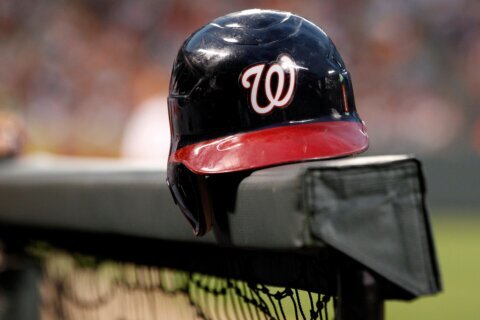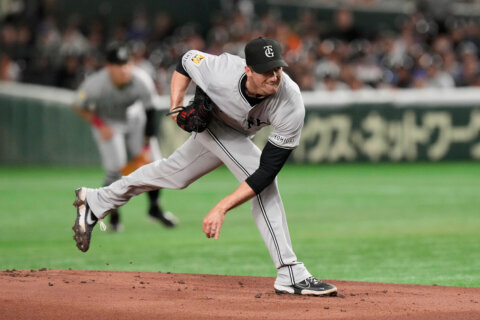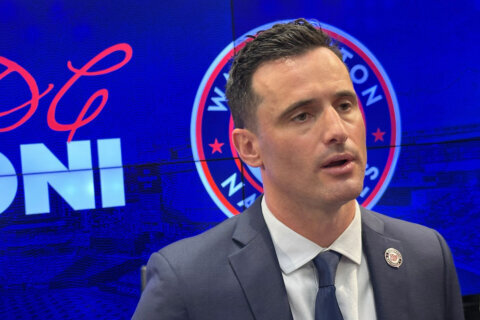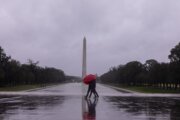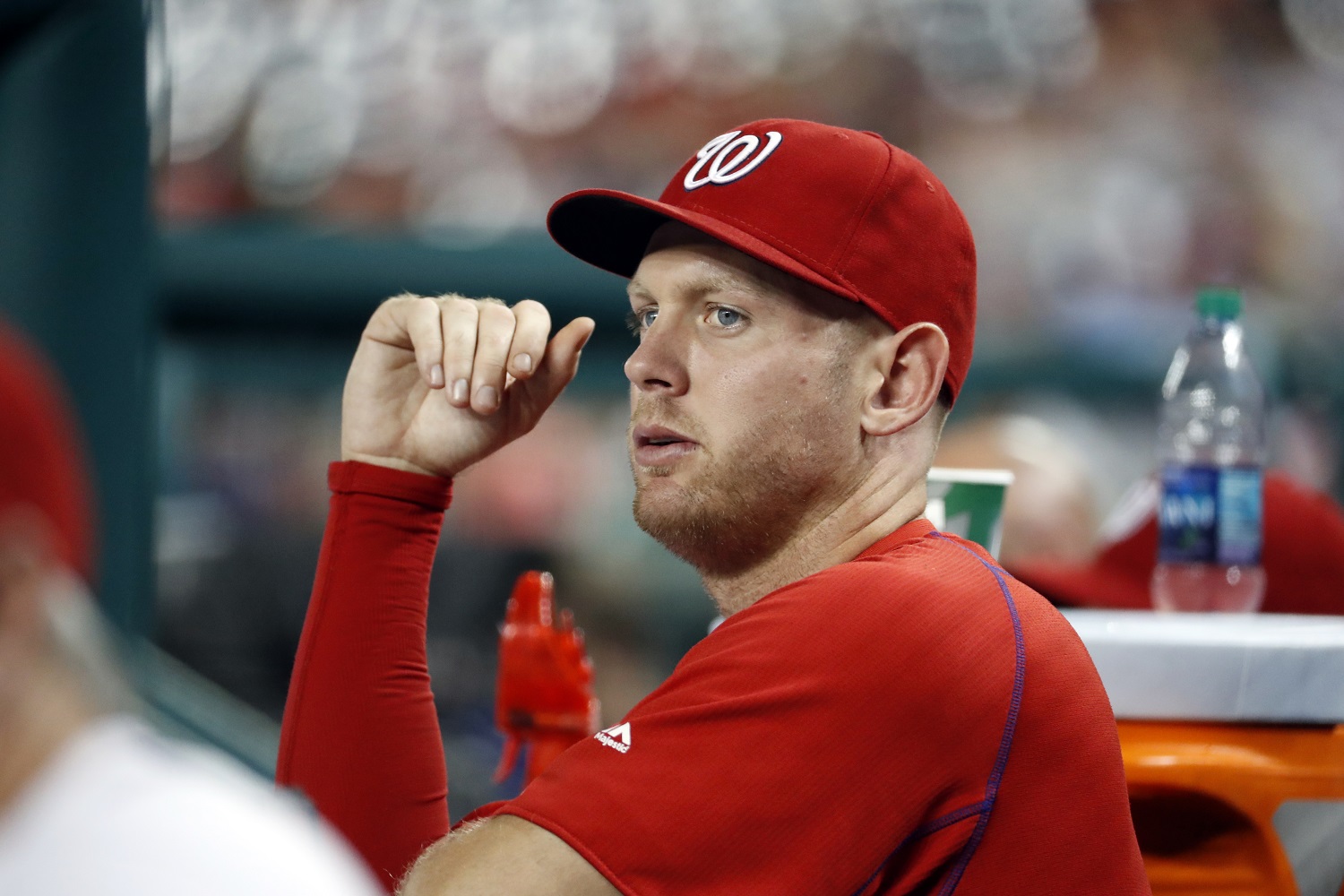
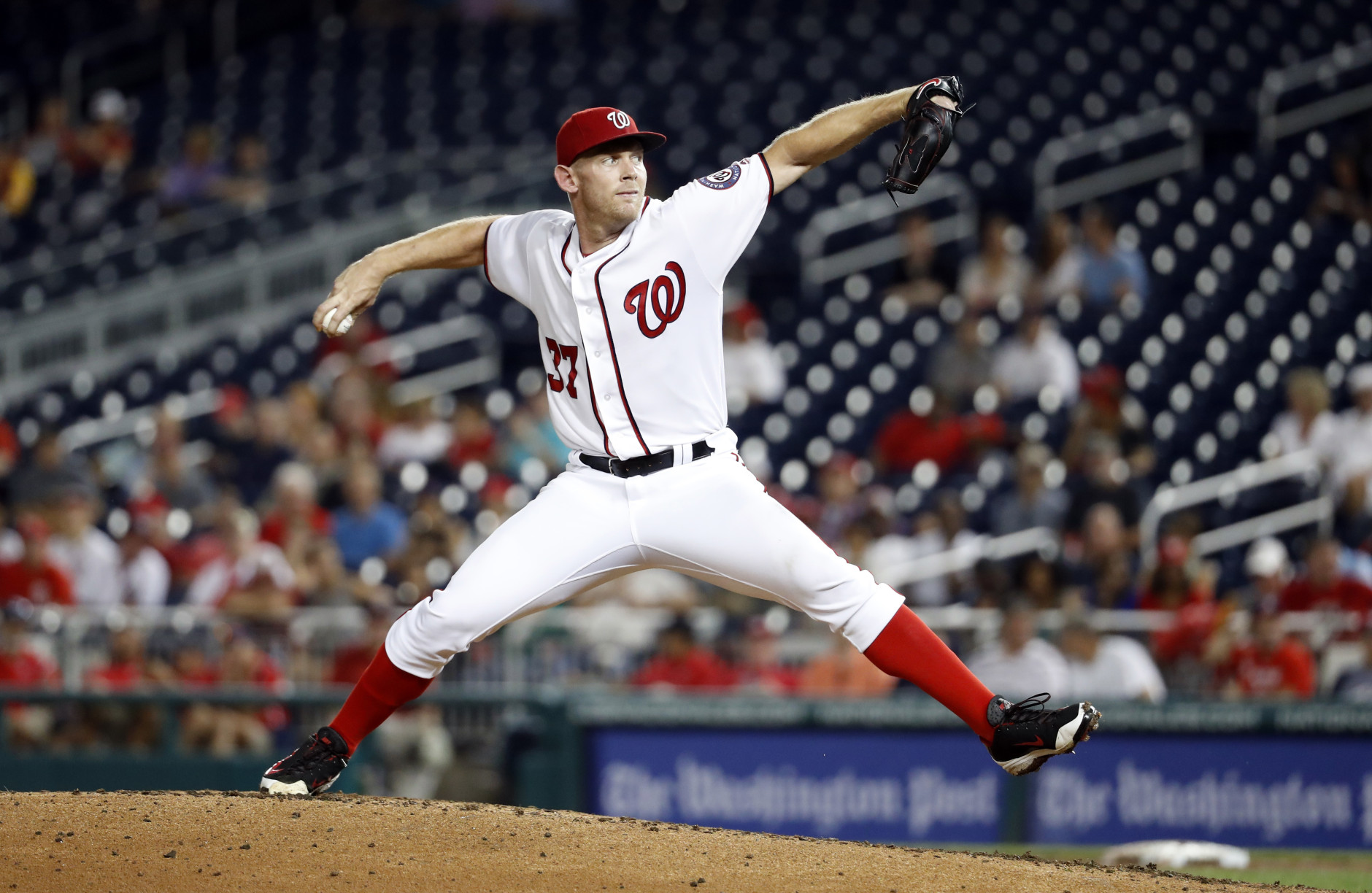
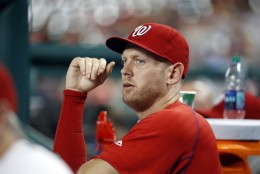
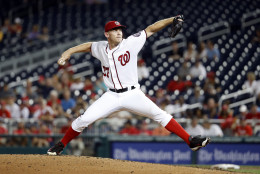
WASHINGTON — The Washington Nationals fan base (not to mention the team and front office) held its collective breath last Wednesday night as Stephen Strasburg exited just 42 pitches into his first start back from the disabled list, wincing in pain with an apparent injury to his pitching arm. The eventual diagnosis of the injury — a strained flexor-pronator mass with no apparent damage to the ulnar collateral ligament — was one that brought some measure of relief, but also confusion as to the severity of the injury and potential ramifications.
To help understand the nature of the injury, WTOP spoke with Dr. Derek Ochiai, orthopedic surgeon at the Nirschl Orthopedic Center in Arlington, Virginia, about exactly what Strasburg is dealing with.
To begin with, the injury is to a tendon and group of muscles — the flexor-pronator mass — which is in the forearm, near the elbow.
“If you put your palms up, there’s a part of your elbow that is toward your body,” Dr. Ochiai explained. “If you put your left hand and put it inside your (right) elbow, and you grip (your right hand), you can actually feel the muscle that is attached tighten.”
The tendon has two primary functions, but neither of them actually involves elbow function. Rather, it affects your wrist and fingers, two parts of the kinetic chain that absorb stress when delivering a baseball.
Some of the worry when Strasburg was initially diagnosed was rooted in the fact that the initial diagnosis was the same in 2010, where he later was discovered to also have a UCL tear, requiring Tommy John surgery. But, as Ochiai explained, in that case, the UCL tear likely happened first, causing the additional strain on the flexor mass, which then presented itself.
“If his UCL is loose or partially torn, then he could overstrain the flexor-pronator mass, because as he’s pitching, he’s putting a lot of strain on that area,” explained Ochiai.
This is where it’s important to note the lack of any sign of any damage to the UCL in Strasburg’s MRI last week. This represents good news in the short-term, specifically in the chicken-or-egg question of whether flexor strains precipitate UCL tears or vice versa.
“The UCL is deeper than the flexor-pronator mass,” he explained. “Most people who get this injury never go on to getting Tommy John injuries, because they’re not necessarily connected.”
However, pitching with an injured flexor-pronator mass can also put more pressure back on the UCL, which is why it’s crucial to make sure Strasburg has fully recovered before being put back on the mound.
“You want to make sure that you rehab every part of his kinetic chain from his rotator cuff all the way down,” said Ochiai.
Considering Strasburg was already on the disabled list for three weeks before his last start and will need some time for the platelet rich plasma injection he received last Friday to do its job, the prospect of him pitching at all again this season is very much up in the air. Ochiai notes the difference with which athletes can respond to treatment and return to injury, but notes that the general rest and recovery time for such an injury is roughly four to six weeks.
“If everything goes perfectly, four to six weeks from now, I could see him being able to start a game or pitch significant innings,” said Ochiai.
Even in that very best-case scenario that puts Strasburg’s return at four weeks from, say Monday, or Oct. 10, lining up with Game 3 of the NLDS. Of course, any additional stress to a not fully healthy flexor-pronator mass could fall on Strasburg’s already surgically-repaired UCL, something the Nationals will be reticent to risk, due to the roughly 25 percent recovery rate for Major League pitchers from a second Tommy John surgery. With Strasburg having signed a seven-year, $175 extension in May, there are long-term concerns to weigh, just as there were during his controversial shutdown in 2012.
We may not know if Strasburg will pitch again this season right up until the moment he does (or doesn’t). But at least, for now, the prospect of a more serious injury seems unlikely.

